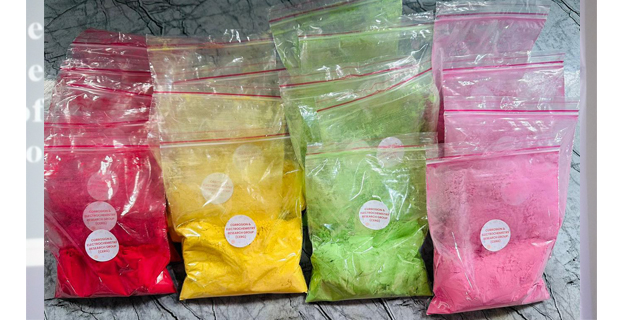The Chemistry Department of Nagaland University, Lumami, has successfully developed its inaugural herbal color, just in time for the upcoming Holi festival. This innovative project, spearheaded by the PhD students of the Corrosion and Electrochemistry Research Group (CERG), marks a significant step towards sustainable development and the “Make in India” initiative.

Under the guidance of Professor Ambrish Singh, research scholars Therola Sangtam, Limasenla Longkumer, Vetezo Venuh, Akhiu Y Yimchunger, and Vilabeilie Rutsa worked on this pioneering endeavor. Their goal was to incorporate learning into entrepreneurship with a motive “to study and to implement also.”
According to the researchers, the herbal colors are environmentally friendly and chemical-free. They mainly consist of edible ingredients, such as beetroot used for the pink color, other flowers to enhance the red hue, spinach and coriander for green, and turmeric for yellow. Additionally, they informed, various elements such as flowers, leaves, cornstarch, and rose water were also added.

“The process of creating this product took around 5 to 6 days, involving numerous time-consuming procedures such as drying, grinding, and mixing,” they explained.
Professor Ambrish Singh explained to Mokokchung Times that stringent quality control measures were implemented, including the assessment of micron particle size, ensuring the suitability of the colors for application on both faces and bodies.
Addressing concerns about commercial colored products, Professor Singh added that the market color products consist of synthetic fibers and it can lead to health issues such as cancer, skin irritation and many more. In contrast, he said the colors which they made were organic and thus, the chances of causing harm to people using it are low.
Furthermore, Professor Singh underscored the significance of self-reliance, highlighting the accessibility of resources in Nagaland for replicating the production of herbal colors at home, at a fraction of the cost.
When asked about plans to commercialize these herbal colors beyond the university setting, the researchers stated that their future perspective includes making them accessible to every village in Nagaland, allowing everyone to prepare them at home at a low cost.
This initiative not only promotes eco-friendly practices but also empowers individuals to take charge of their well-being and contribute to a sustainable future.
“With the resources present in Nagaland, everyone can prepare this at home, at low cost,” Professor Singh added.

Oh my goodness! a tremendous article dude. Thank you However I am experiencing difficulty with ur rss . Don抰 know why Unable to subscribe to it. Is there anybody getting identical rss downside? Anybody who knows kindly respond. Thnkx